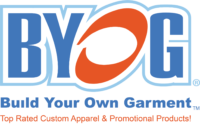There are a variety of different jobs that require safety apparel and gear. The American National Standards Institute (ANSI) has certified several types of safety vests for those jobs. The gear is broken down into three classes. Each safety rating is designed to help the worker choose the appropriate attire for the job based on their environment. Factors such as the speed of traffic, complexity of the work environment, and the worker’s ability to focus are all taken into consideration when assigning an attire class for workers. Often, a risk assessment is conducted before selecting a class, or in some cases the company may default to Class III for the highest visibility.
Class I ANSI Safety Vest
Class I vests are for workers in the lower risk jobs. Those jobs are generally in areas with traffic traveling at or below 25 mph, and work is occurring at a safe distance from the road. A sidewalk repair in a smaller residential area, or a parking lot attendant are prime examples.
In order for a vest to be consider a Class I vest, it must be either safety yellow or safety orange and have at least 155 square inches of reflective tape. The reflective tape should go over the shoulders and around the middle of the vest. These vests are made to cover the torso and do not require sleeves.
Class II ANSI Safety Vest
Class II vests are for working environments that pose a greater risk to workers. This can include workers on a roadway where traffic is moving under 50 mph. These vests are often worn by airport baggage handlers, school crossing guards, survey crews, and railway workers.
These vests are larger than those of Class I because they require greater visibility and reflective areas. A Class II vest has at least 775 inches of safety yellow or safety orange material and 201 square inches of reflective tape.
Class III ANSI Safety Vest
Class III vests are for workers in the most dangerous environments where visibility is the highest priority. This includes roads where traffic is traveling at 50 mph or greater. This would include highway construction workers and flaggers. It can also be used for emergency personnel working in hurricane or blizzard conditions where visibility is limited.
A Class III vest is the largest of the vests as it requires the most background fabric and reflective tape. Class III vests require 1,240 inches of safety yellow or safety orange background and 310 square inches of reflective tape.
Purchasing ANSI Certified Safety Attire for Work?
BYOG (Build Your Own Garment) has a variety of ANSI certified safety attire to select from based on your needs. We also can print your construction t shirt designs. If you have any questions regarding the type of attire gear you might need, we can help you there as well. Contact us through our online chat feature on our website, call us at (925) 829-3950 or toll-free at (855) 776-8465, or fill out our online form and we will contact you within 24 hours.
Keep Reading:




